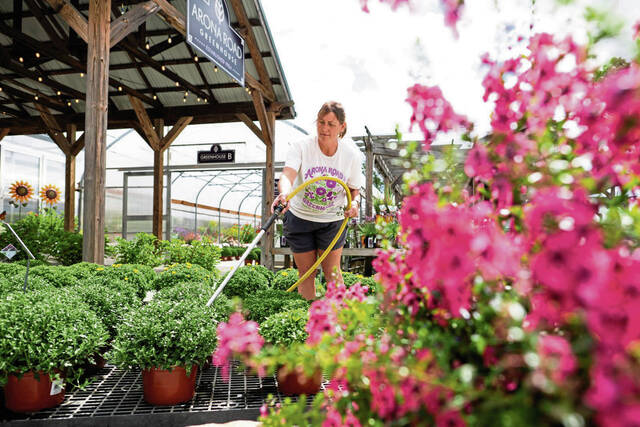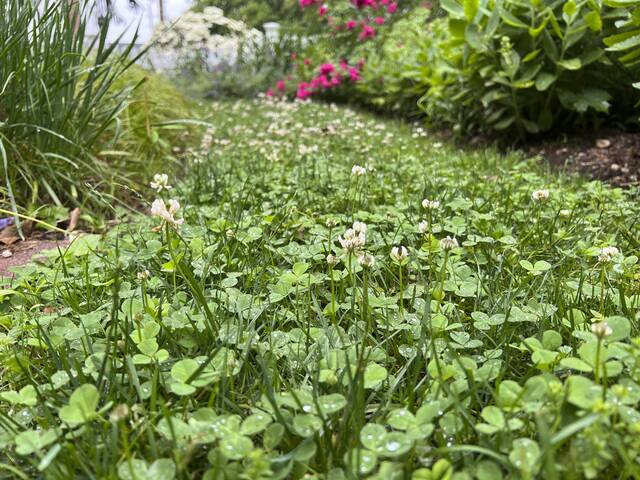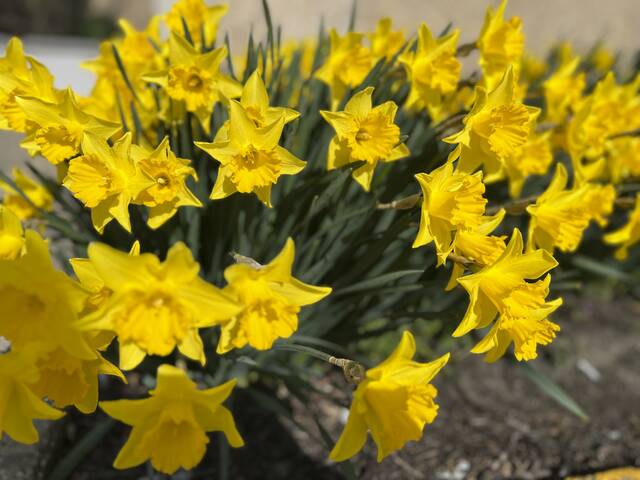Question: My mom and I are big fans of your and Doug’s show on KDKA radio. I was listening last Sunday morning, and an organic black spot prevention product was mentioned. I wasn’t able to write it down at the time and forgot the name of it. I would really appreciate it if you could let me know the name. We really have a problem with black spot on our roses.
Answer: Unfortunately, black spot (Diplocarpon rosae) is a familiar disease for many rose growers. This fungal organism mars the foliage of infected plants. Early in the infection cycle, small, dark spots appear on the leaves. Eventually, the spots grow larger and the leaf yellows and falls off. Full defoliation can occur if black spot is not treated.
The good news is that, though black spot makes a rose plant not look very good, it seldom kills the plant. And, like other fungal pathogens, black spot is always more prevalent during seasons with a wet spring or summer. If we have a drier year this year, you may not have the same issue with black spot on your roses.
Good circulation
There are several things you can do to limit your roses’ chances of infection for the coming season. First, though we can’t control the amount of rainfall we receive, we can make sure that rose plants are spaced properly to encourage good air circulation. Properly pruning the plant for an open structure does the same and helps limit disease occurrence.
Whenever possible, water roses from the bottom and do your best to keep the foliage dry. Like other fungal diseases, black spot spreads by spores that are easily moved from one leaf to the next on water splash. Plus, the spores need water to germinate, so keeping the foliage dry leads to a significant reduction in this and other diseases.
Black spot easily overwinters on fallen foliage. A the end of the growing season, pick up every infected leaf on the ground beneath the plant and dispose of them in the garbage.
Try Serenade
The product we mentioned on the radio program is an organic biological fungicide named Serenade. It’s made from a species of bacteria called Bacillus subtilis.
This strain of bacteria stops the spores of many different fungal pathogens from germinating by preventing the spore from attaching to the leaf. It works best as a preventative and should be applied according to label instructions either before symptoms occur or just after the first spots are observed.
Serenade is widely available at garden centers and nurseries, as well as from online sources. Not only is it effective against black spot, but it also targets powdery mildews, rusts, blights, rots and other fungal diseases.
Plant disease-resistant varieties
But, if you want to skip having to think about managing black spot at all, it’s best to grow rose varieties with a natural resistance to the disease.
The Knockout series of roses, as well as the Easy Elegance line of roses are two excellent choices. There are also many shrub roses and floribunda rose varieties with great black spot resistance.
Always do your homework before purchasing new roses to ensure the varieties you select have a natural resistance to this common pathogen.








